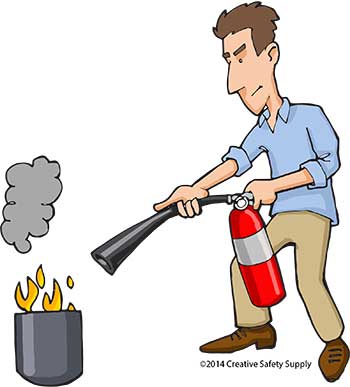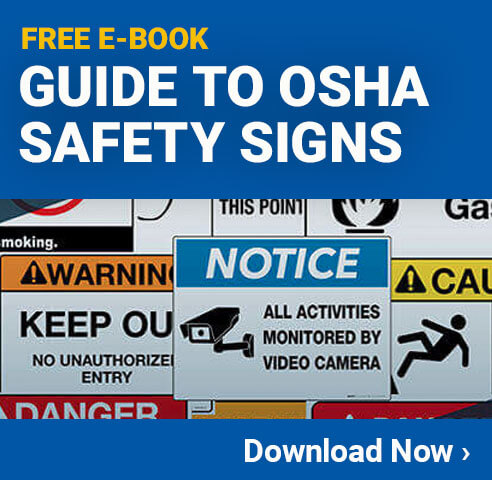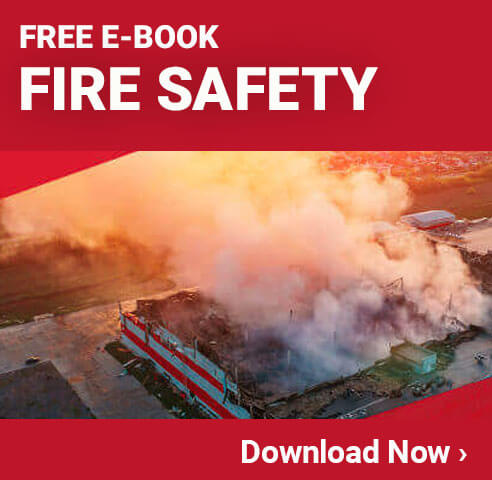Fire prevention in the workplace is one of the most important areas of focus for OSHA. With that goal in mind, OSHA has a series of requirements focused on fire prevention. These standards help show employers how they can reduce the risk of fire and how they can ensure employees will be as safe as possible should a fire break out. The regulations for compliance are found under section 1910.39 from OSHA.
When working to be compliant with these regulations, employers must start out by creating a fire prevention plan. This will help reduce the risk of a fire occurring in the facility in a variety of ways.
Requirements for a Fire Prevention Plan
A fire prevention plan is required by all employers who have ten or more employees. This plan should include instructions for how to reduce the risk of a fire in the workplace, as well as training for employees on what they can do to avoid making fires.
Fire Prevention Plan Must Be Written
The plan must be in written form and it needs to be available to review by all the employees at any time they would like. Many employers have a physical copy of their fire prevention plan in their office and then also make it available digitally either on their corporate website or on their internal intranet. As a written plan, the fire prevention plan must use language that the average person can easily understand.
Requirements for the Fire Prevention Plan
OSHA requires that employers make a fire prevention plan that covers at least five main points. These are just the minimum areas that must be covered. Employers may choose to include other information in their plan where they feel it is necessary. The five required points are:
- Major Fire Hazards - All of the major fire hazards that exist in the facility must be identified. Along with each of the hazards, there must be instructions for how these hazards should be handled and stored. Detailed information such as how the hazards could ignite and what fire protection is needed when working with them should be included as well.
- Avoiding Flammable & Combustible Waste Buildup - A set of procedures should exist that identifies the steps to take to ensure there is not an unsafe buildup of flammable and/or combustible waste materials. Included in these procedures should be how and when these waste materials will be safely removed from the area.
- Maintain & Safeguard Information - All procedures regarding the maintenance and safeguards used on any heat-producing ignition need to be clearly identified in the fire prevention plan.
- Responsible Maintenance Parties - The names and/or job titles of all employees responsible for the equipment used to prevent or control the ignition of fires. This includes maintenance personnel who work on heat-producing machines.
- Parties Responsible for Fuel Source Hazards - The names and/or job titles of all employees responsible for controlling any fuel sources that could be potential fire hazards.
Employee Training Requirements

The employees working in the facility who have any responsibility for either maintaining heat sources or keeping fuel sources safe need to have the proper training so they know how to keep their areas safe. Having a strong understanding of things like how much heat a given machine should be producing, how to measure this heat, and ignition points for fuel sources is critical to avoiding fires.
The employees who have direct responsibilities for fire prevention need to have high levels of training, but all employees should be trained on general prevention strategies. OSHA doesn't have specific requirements in place since training needs vary greatly from facility to facility. Some standard training that employees should have, however, includes:
- Emergency Exit - Knowing where to go should a fire occur.
- Fire Drills - Surprise fire drills should be a part of all employee training.
- Fire Extinguishers - Employees should all be trained on how to properly use fire extinguishers. This includes what type of fire extinguisher is needed based on the source of the fire.
The employer can identify other training needs based on the risks associated with the facility itself.
Classifications of Materials
Within the fire prevention plan, one section needs to identify potentially flammable or combustible materials in the facility. These items are generally broken down by classification of the risk. Items found in each of the following fire classifications should be included in the plan:
- Class A Materials - Class A includes materials that won't ignite on their own, but when exposed to a sufficient heat source will continue burning. Examples include paper, cloth, and wood.
- Class B Materials - All gases, liquids, greases, and other similar materials that can burn when exposed to flame, heat, or other ignition sources.
- Class C Materials - Class C materials are any equipment or materials that use electricity. The electrical current can cause a fire very quickly should there be damage or other malfunction. Arc flashes, for example, are a serious risk of class C materials.
- Class D Materials - Any material that is volatile and can ignite quickly is a class D material. This includes sodium, potassium, zirconium, and magnesium.
Ignition Sources
All ignition sources must also be included in the fire prevention plan. Every facility will have a unique set of potential ignition sources included. The following are some examples of ignition sources that should be included:
- Heat Sources - Any sources of heat such as space heaters, furnace vents, ovens, combustion engines, machines that produce heat.
- Open Flames - Welding torches, gas furnaces, gas ovens, lighters (smoking areas).
- Sparks - Metal saws, wood saws that cut materials that potentially contain nails or screws, metal drills.
- Chemical Ignition - Any chemicals that can combust under normal conditions.
There are many other potential ignition sources. Some items can also be considered ignition sources only in some situations. A light bulb, for example, doesn't produce enough heat to ignite things in most areas, but when there are highly flammable gases in the area, that may not be the case. Each facility needs to evaluate all potential ignition sources and include those that present any elevated risk.
Fire Suppression Options
OSHA also requires that most facilities have fire suppression systems in place. There are many approved options depending on the type of facility. Fire suppression systems should be included in the fire prevention plan.
Fire Extinguishers

Fire extinguishers are the most common type of fire suppression system in most facilities. They need to be located throughout the facility, especially in areas where there is a higher-than-normal risk of fire. Fire extinguishers are typically hung on walls or pillars. In order to make them more visible, it is also necessary to have safety signs or labels above the extinguishers themselves. This will help ensure people can locate them when they are needed.
Sprinkler Systems
Sprinkler systems are also required in many areas. These sprinklers can use water or other fire suppression liquids or foams when necessary. These systems need to be hooked up to smoke or heat detectors so they engage automatically when a fire is present.
The fire prevention plan should identify what type of suppression element is used and how it will be engaged. It should also show whether the entire system will engage at once or if it is a zoned system that only activates certain areas based on the location of the fire.
Emergency Exit Requirements
OSHA requires that all workplaces include emergency exits and plans for how they are used. These requirements are regulated outside of the 1910.39 standard, but they are closely associated. The emergency exit plan (as well as fire exit drill plans) should be included in the official written fire prevention plan. Some of the key requirements for emergency exits include:
- Number of Exits - In general, each area of a facility should have at least two exit paths. For large areas with high numbers of people, additional options are recommended.
- Qualifying Exits - In order to qualify as an emergency exit, it must lead people outside the building, not simply to another area of the building.
- Clearly Identified - Exits should be identified by signs that light up (either battery operated or with glowing materials) so people can see them.
- No Blocking - Policies must be in place to prevent people from blocking emergency exits. This includes doors, windows, and other routes identified as exit points.
What to Do If a Fire Is Found
A fire prevention plan should also go into some detail about what should be done if a fire is found in the facility. Training employees on how they should be respond can save lives as well as the facility itself. The first thing an employee should do when a fire is discovered is pull the fire alarm. This will alert people to get to safety and also notify the area fire department to come assist as quickly as possible.
For small fires, employees can be instructed to find the nearest fire extinguisher and attempt to contain or put out the fire. This should only be done as long as they are able to stay safe and maintain an escape route should the fire get out of control. If they do not have a reasonable ability to put the fire out or contain it, they too should exit the facility as quickly as possible to avoid the risk of injury from either the fire or the smoke produced.
Resources
- http://www.nfpa.org/public-education/campaigns/fire-prevention-week
- https://www.osha.gov/OshDoc/data_General_Facts/emergency-exit-routes-factsheet.pdf
Similar Articles
- Fire Safety in the Workplace
- NFPA 25: Standards for Fire Protection Systems
- Preparing the Workplace with Emergency Action Plans (EAP)
- Floor Marking for Fire Extinguishers
- Addressing Biohazard Safety in the Workplace
- Job Hazard Analysis: Addressing Coronavirus Risk in Your Workplace
- Fall Protection in the Workplace: OSHA’s Guidelines
- Hazardous Materials Identification System (HMIS Labels)
- Improving Workplace Electrical Safety



